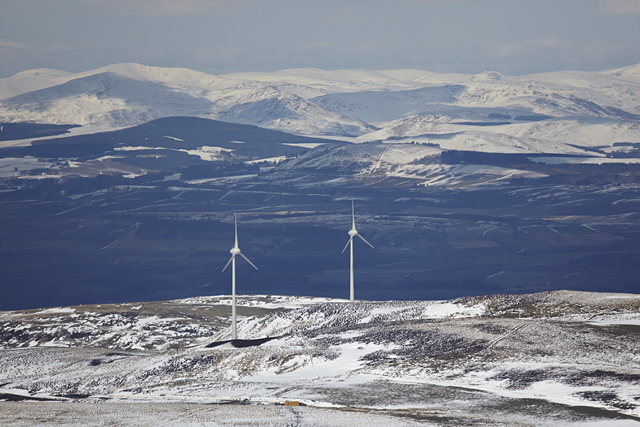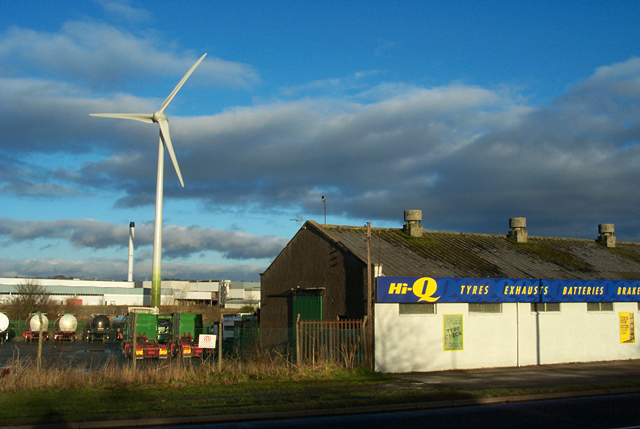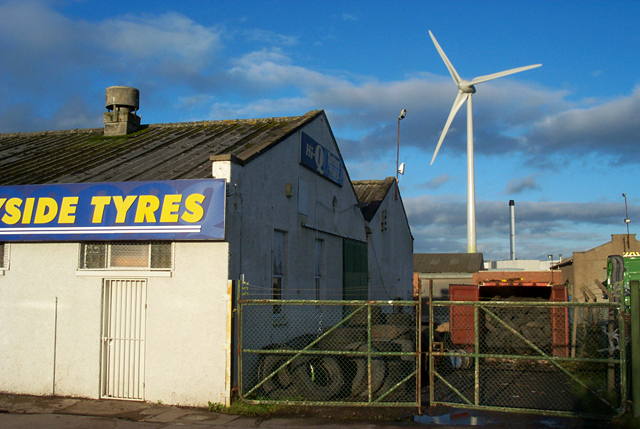When I went for a walk over Ark Hill in the Sidlaws a few weeks ago, I realised that wind power is sometimes the stuff of hot air: tabloid headlines, emotive soundbites, kneejerk reactions. One way to set it into context is to explore the considerable back story of renewable energy in Scotland.
 Ark Hill from Craigowl
Ark Hill from Craigowl
It always takes something to spark a child’s imagination in a subject, and in my case it was the discovery that my grandfather’s cousin, Douglas Neilands, was secretary to the North of Scotland Hydro Board in its glory days, before it became SSE. The Hydro was created in 1943 by an act of Churchill’s wartime coalition government. It was driven by Tom Johnston, whose name is largely forgotten today, but his efforts to modernise Scotland stemmed from strong social convictions.
Johnston was a socialist, a great patriot, and acknowledged to be the greatest Scottish Secretary of the century. Like Winston Churchill, he represented Dundee in Parliament: one of a long line of history makers such as Ned Scrymgeour and Gordon Wilson who also took their seat here on the banks of the Tay. You may not realise it, but Churchill arranged his trysts at an unmarked house in Laurel Bank.
The aim of the Hydro Board was to provide electricity for all in the northern half of Scotland, and its creation anticipated a great reconstruction effort after the war, and began forward planning on the great hydro-electric power schemes at Loch Sloy, Loch Tummel and many others.
As a by-product, the Hydro Board commissioned some truly Scottish architecture, from the austere Edwardian neo-classical of Tarbolton, to the modern baronial of Shearer & Annand, and finally the Scots Modernism of RMJM. The hydro schemes they built are still generating power 60 years on – and more importantly, supporting jobs, providing renewable energy, and preventing floods downstream of their dams.
As with wind farms today, there was political opposition from several sides: the gentry were opposed to Hydro schemes as they impinged on grouse moors, and the far right were ideologically opposed to the socialist notion of public utilities. Ironically, opposition also came from the earliest throes of the environmental movement. Yet hydro power used existing watercourses to feed reservoirs which were often no more than existing lochs whose levels were raised.
It begs the question, is there an “ideal” source of power? Nuclear is hugely expensive and potentially dangerous when things go wrong; however, it doesn’t create CO2. Coal is polluting and carbon-intensive – unless elaborate flue gas scrubbing and carbon capture equipment is fitted. Oil is equally bad, perhaps worse, and the raw material is more expensive than coal. Natural gas is cleaner, and more plentiful for the moment, but isn’t renewable and will eventually run out.
Of the renewables, wind marks the landscape with turbines and isn’t reliable enough to use as base-load. Solar photovoltaics are hugely expensive, and perhaps better suited to countries closer to the equator where the sun is stronger. Wave power was pioneered in Scotland, but remains in the early stages of commercialisation and certainly isn’t invisible. Biomass energy is renewable, and waste incinerators seem like a good way to get rid of rubbish while generating “free” heat and power, yet worries remain over the pollution they can create and of course they still generate CO2.
The cleanest and most renewable power source of all is nuclear fusion: but the physics required to make it work lie beyond our reach, and a fusion-powered generating station would cost tens of billions of pounds to construct. Choose your power source carefully, and bear in mind that government subsidies are fugitive things, and politicians develop great enthusiasms which are quickly dropped. The people who draw up those policies are lonely re-arrangers of things and anxious malcontents.

One of the Michelin turbines in Dundee
A few years ago, an interesting short TV series called The Trap ran on BBC2. The Trap discussed the theories of Freidrich von Hayek, principally that folk act out of self-interest, and that to create social order, you have to rely on their competing selfish impulses being balanced out. That idea was applied during the Cold War (by the Rand Corporation), to create the nuclear "Balance of Terror" through mutually-assured destruction.
The Trap's thesis is that the same principle was then applied to the NHS by the Thatcher government in the 1980's. Thus we have the "internal market", which spawned PFI hospitals ... and where from there? Perhaps Global Warming will be the next application of von Hayek's theory. It's certainly true that in the pursuit of freedom (freedom of choice in where to live, and freedom to drive and fly where we will) we're being constrained or trapped both by Climate Change, and the measures to tackle Climate Change.
Over a decade ago, the Government announced it would force us to cut carbon consumption by 60%, reducing carbon emissions to the same level as in the 1870's and Government policies in the past twenty years such as the fuel duty escalator, carbon taxes, road pricing and carbon-neutral buildings have largely positive benefits.
Most measures to combat Climate Change aren't retrogressive: using public transport, finding alternatives to coal and oil, reducing pollution of various sorts, making buildings and vehicles more energy efficient are worthwhile in themselves – but conspiracy theorists will separately argue that the West is using Climate Change as a means to check the economic power of China and India.
Von Hayek would make the point that someone else always benefits, even as our energy costs increase: for example, the Seven Sisters (oil majors) are using Climate Change as a means to corner government funding for research into alternatives to oil, when they're quite capable of developing alternatives themselves.
Another alternative was the Hydro Board’s own development programme, which ended in the 1970’s: Foyers was the last pumped-storage scheme, and Craigroyston on Loch Lomond was later shelved. However, NoSHEB also pioneered wind turbines, working with the Howden company and eventually building a prototype of today’s monster turbines, at Burgar Hill in Orkney.
While 3 or 4MW turbines are over 100 metres tall, many turbines in the countryside are only 20 or 30m, no more than the height of trees in the shelter belts planted around farm steadings. They’re not particularly powerful nor intrusive, and they follow a century-long tradition of harnessing the wind: “Climax” water pumps, which raised water from boreholes for irrigation, then in the 1930’s, Lucas “Freelite” windmill dynamos, which provided a 12 volt supply before farms had mains electricity.
So, to come back to the Sidlaw Hills, the turbines on Ark Hill aren’t the largest in Angus: they’re smaller than those built at Michelin in Dundee, and little more than half the height of those proposed in Glen Isla, fourteen 135m turbines at Cormaud and eighteen 135m turbines at Macritch Hill, both close to the Backwater Reservoir.
The Michelin wind turbines are actually a positive feature on the skyline telling you that industry is working here, just like chimneys or cranes used to be signifiers. In fact, if you stand on Craigowl you can see both the Michelin and Ark Hill, and it’s worth making that contrast. In the early days of economic forestry, Sitka plantations were set out with hard, geometric edges but now, they follow the natural contours and lie of the land and sit much more happily.

Another of the Michelin turbines
Similarly, we need to site the turbines more intelligently, retaining a sense of wilderness and countryside. It’s a good idea to keep wind turbines away from houses, airfields, nature reserves and wild places. It also makes sense to build them close to where the power is needed, or out at sea in arrays where they can achieve a greater power density – so perhaps the turbines at Michelin are urban pioneers.
No feedback yet
Contact | Help | Latest comments | RSS 2.0 / Atom Feed / What is RSS? | Powered by b2evolution
This collection ©2025 by Mark Chalmers | Blog theme | b2evolution CCMS